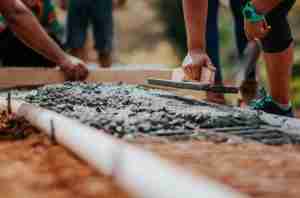Fire safety is a paramount concern for homeowners and property managers. In the event of a fire, the choice of building materials can make a significant difference in protecting lives and property. Fire-resistant drywall, often referred to as “Type X” drywall, is a crucial element in creating a fire-resistant barrier within your property. In this guide, brought to you by Utah Drywall and Repair, we’ll explore the importance of fire-resistant drywall, its characteristics, and how it can safeguard your property.
Fire accidents can occur unexpectedly, posing a severe threat to life and property. Fire-resistant drywall is a proactive measure that can help contain and slow down the spread of fires, providing valuable time for evacuation and firefighting efforts.
Contents
Understanding Fire-Resistant Drywall
Fire-resistant drywall, often known as Type X drywall, is specially designed to withstand fire for a specified period. It is composed of a gypsum core mixed with glass fibers and other additives, making it more fire-resistant than standard drywall. Type X drywall is thicker and denser, providing enhanced protection.
How Fire-Resistant Drywall Works
Fire-resistant drywall works by resisting the penetration of heat and flames. It does this through a combination of factors:
- Gypsum Core: The gypsum core in Type X drywall contains chemically bound water, which is released as steam when exposed to high temperatures. This process helps absorb heat and slows down the temperature rise on the non-fire side.
- Glass Fibers: Reinforcing the gypsum core with glass fibers increases the board’s structural integrity and fire resistance.
- Thickness: Fire-resistant drywall is thicker (usually 5/8 inch) compared to standard drywall, which provides additional protection.
Where to Use Fire-Resistant Drywall
Fire-resistant drywall should be used in areas where fire protection is critical:
- Garages: Garages are often used to store flammable materials like gasoline and chemicals. Using fire-resistant drywall in the walls shared with living spaces can help contain fires.
- Kitchens: Kitchens are prone to grease fires. Installing fire-resistant drywall behind stoves and ovens can help prevent fires from spreading.
- Basements: Basements may have furnaces, water heaters, and electrical panels. Fire-resistant drywall can offer added protection in these areas.
- Multi-Unit Buildings: Apartments, condominiums, and multi-unit buildings benefit from fire-resistant drywall to prevent fire from spreading between units.
Selecting the Right Fire-Resistant Drywall
When selecting fire-resistant drywall:
- Ensure it meets local building codes and fire safety regulations.
- Choose the appropriate thickness and type based on the required fire rating (typically 30, 60, or 90 minutes).
- Consider consulting with a professional to determine the best fire-resistant drywall for your specific needs.
Installation and Maintenance
Proper installation of fire-resistant drywall is crucial. Hire experienced professionals who follow the manufacturer’s guidelines and local building codes.
To ensure its effectiveness over time:
- Avoid puncturing or damaging the drywall.
- Regularly inspect and repair any cracks or holes.
- Do not obstruct fire-resistant drywall with furniture or other objects.
Conclusion
Fire-resistant drywall is a critical component of fire safety in residential and commercial properties. By slowing down the spread of flames and heat, it provides valuable time for occupants to evacuate and for firefighters to respond. To ensure your property is adequately protected, consult with experts like Utah Drywall and Repair at 801-406-6350 or visit our website drywallrepairutah.com. We are committed to helping you make your property as safe as possible.




